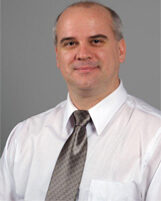According to the schedule, this master’s student will be in charge of the following tasks:
1) 3-16 Study and report on SDA weaknesses when used together and suggest solutions
2) 3-31 Resource arbitration during integration of two SDA modules
3) 3-32 Integration and evaluation of DME and Transponder functions two-SDA configuration
4) 3-33 Comparison of outputs and interoperability other SDA with expected results
5) 3-32 Demonstrate module individual use functionality performance in reference to the respective RTCA standard for that unit
6) 3-34 Bench testing (and module validation) of the integrated combined three SDA
7) 3-41 Examination of physical layer processes for an avionic wide band radio3-13 Evaluate WBR to MOPS under static conditions
8) 3-32 Bench testing and analysis of each SDA
9) 4-42 Flight testing of the integrated three SDAs
The objective of this Master’s research project is to develop a thorough analysis of the integrated modules to avoid significant interoperability issues later in the development. The next step of the study will be the analysis of real-time measurements. The testing will be done on the bench, as well as, during flight tests. This part of the research will involve close collaboration with our industrial partners. The aim of this approach is to understand as much as possible interoperability with the remaining avionics suite (EFIS, Short Range Nav (SRN) coupling, VHF & UHF pairing, auto-pilot interconnection, display outputs, ARINC databus entities). Hence, the students should work very closly and discuss with the post-doctoral fellow about their research, modules, and how interoperability issues will get resolved. After a complete evaluation and validation in simulation (Matlab/Simulink), tests and analysis will be done with real data. The acquired data will be compared with the reference GNSS receiver data, as well as, data acquired from the conventional DME in airborne testing comparison of existing flight test bench and integrated DME will be necessary. New simulation will be required for improving the simulation model to obtain better performance and to enhance fidelity of any simulation models.
The main goal of this project is to give a thorough insight into DME measurement weaknesses (such as acquisition time) and errors. This one year research project will start with a meticulous analysis of the minimum operation performance standards MOPS, of the DME outlined in RTCA documents DO-180A and DO-189. A bibliographical study of the existing flight characteristics of DME transceivers, their integration with Area Nav RNAV receivers, Flight Management Systems (FMS), ARINC Databuses, and Avionics suites.will be required, to understand what improvements could be considered and to be able to obtain good modelization and analyses.
![]()
